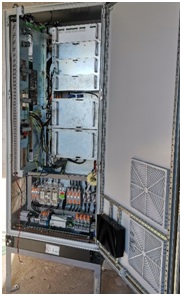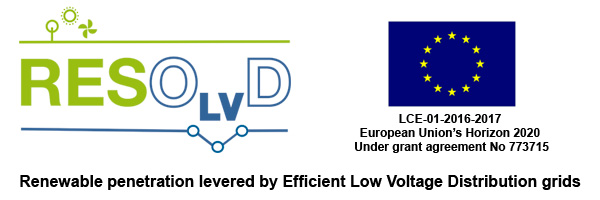A software solution to manage the whole PED solution and to satisfy advanced energy services.
The Power Electronic Device (PED) is responsible for managing a Hybrid Energy Storage System (HESS). And the Intelligent Local Energy Manager (ILEM) is accountable for operating the Power Converter Source (PCS) according to the operator’s expectations. Accordingly, the ILEM is a complete software solution that is continuously running in an industrial PC located in PED solution. Figure 1 presents the whole PED solution in which the ILEM is performing the following actions:

The first action is to supervise and control the PCS and the HESS in real-time through a Modbus master. Also, any event registered is stored and posteriorly transmitted to the responsible operator.
The second action is to manage in real-time both PCS and HESS to charge or discharge batteries according to the schedule calculated by Power Sharing Application (PSA). In this sense, the ILEM has to preprocess the operator’s scheduling and initialize the non-linear optimization carried out by the PSA. Then, once the preprocess and inicialitzation conclude triggers the PSA, which also runs in the same industrial PC. When the optimization finishes, the ILEM stores the PSA output, which comprises the 24 hours battery setpoints. Finally, it administers and executes them along the day until new scheduling is submitted.
The third action is to generate reactive power setpoint according to the Voltage Support Application (VSA). The PCS can exchange reactive power with the grid, and the VSA is an application specially designed to support the volage when the PED is located at the end of the line. Similarly to the previous action, the ILEM is continuously measuring the voltage and triggering the VSA, which has been previously configured by the responsible operator. So, the ILEM gets the VSA output and applies it to PCS.
The forth action is to activate and deactivate the power quality functionalities. The PCS is capable of providing advanced Power quality functionalities. These functionalities are to balance downstream three-phase currents, compensate downstream reactive power, and mitigate downstream harmonic currents. After enabling these functionalities, the ILEM has to check if the grid configuration is valid to perform these functions.
The fifth action is to activate and deactivate the island mode operation and impose the voltage and frequency of the created island. The PCS, together with the HESS is capable of creating a stable and controlled island. For instance, after an external grid blackout, the PED can reenergize the isolated grid to supply loads and generators. And, when the external network is restored, the PED is able to resynchronize the isolated system to this external grid and finish the island operation without a blackout.
The sixth action is to facilitate a communication channel where a web server is running, and a web application allows the PED local supervision and control. The ILEM provides this local operation and permits to manage the PED in grid, island, and recovery modes. In the grid mode, the PED acts as a current source and can exchange power and provide power quality functionalities. In the island mode, the PED acts as a voltage source and maintains the voltage and frequency of the isolated system. Finally, in the recovery mode, the PED acts as a current source, and it is a mode specially designed to charge or discharge batteries.
The seventh is to create a communication channel where a Modbus server is running. Through this chanel, the system operator can control the PED as a four-quadrant controllable storage system or manage island mode, or even can schedule the PED along the day.
